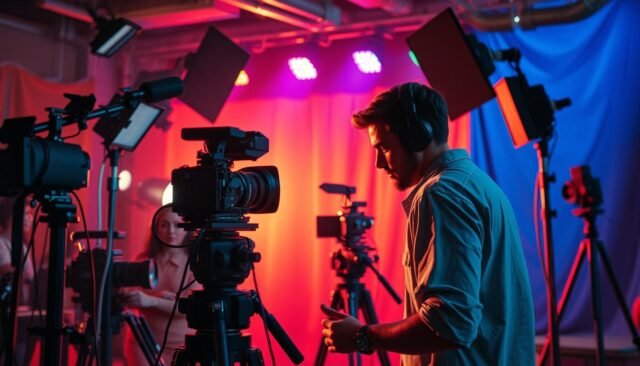Filmmaking is a complex art form that brings together many creative disciplines to craft a compelling story. One of the most crucial yet often overlooked aspects is production design. Whether you’re a film student, a movie lover, or someone working with rezaid film, understanding production design can change how you view movies forever.
What is Production Design in Film?
Production design refers to the overall visual look and feel of a film. It involves creating the world that characters inhabit — from sets and locations to props and costumes. The production designer works closely with the director and cinematographer to ensure the visuals align with the story.
The Evolution of Production Design
Production design has evolved dramatically since the early days of cinema. What started as basic set decoration has become an art form in its own right. Modern productions rely on advanced technology, elaborate sets, and a clear vision to transport audiences into different worlds.
Early Cinema and Basic Sets
In early cinema, sets were simple and limited by technology. Most films were shot on studio backlots. As storytelling became more ambitious, so did the need for believable, immersive worlds.
Role of the Production Designer
A production designer oversees all visual elements within a film’s frame. This person manages teams of art directors, set decorators, and prop masters to bring the vision to life.
Collaboration with the Director
The production designer’s role is deeply collaborative. From pre-production onwards, they work with the director to define the film’s aesthetic style, mood, and tone.
Why This Collaboration Matters
A strong relationship ensures consistency. Every element, from color palettes to furniture, serves the story’s emotional and narrative goals.
Key Elements of Production Design
Many aspects come under the umbrella of production design. Each contributes to the audience’s immersion.
Set Design
Set design is the backbone of production design. It involves building physical spaces or modifying existing locations to match the script.
Props and Decoration
Props add realism and detail. They help actors connect with their characters and make the setting believable.
Importance of Production Design in Storytelling
Production design is more than just decoration. It shapes how we interpret the story.
Visual Storytelling
Through carefully crafted visuals, production design conveys mood, era, and character traits without words.
Symbolism and Themes
Objects, colors, and layouts can carry symbolic meaning. These subtle details deepen the audience’s understanding of the narrative.
How Production Design Impacts Audience Experience
Both roles require close teamwork to ensure every detail is perfect and true to the story.
Great production design makes a film memorable. It immerses viewers in the world, making the story believable.
Emotional Impact
Visuals can evoke strong emotions. A well-designed set can make scenes feel more authentic and impactful.
Examples from Iconic Films
Think of the dystopian streets in Blade Runner or the grandeur of The Grand Budapest Hotel. These films showcase how powerful Production Design can be.
Production Design Process
The process is meticulous and requires collaboration across departments.
Pre-Production Stage
The production designer starts by reading the script and researching. Mood boards, sketches, and models are created to communicate ideas.
During Production
Once filming begins, the production designer oversees set construction, decoration, and last-minute changes to keep visuals aligned with the director’s vision.
Production Designer vs. Art Director
People often confuse these roles, but they’re distinct. The production designer leads the entire visual department.
What Does an Art Director Do?
The art director executes the production designer’s vision. They manage day-to-day operations, from set building to budgeting.
How to Become a Production Designer
If you’re inspired to enter this field, know that it requires creativity, collaboration, and technical skills.
Skills and Education Needed
Most production designers have a background in art, architecture, or theater design. Strong communication and problem-solving skills are essential.
Career Path and Growth
Many start as set designers or art department assistants. With experience and a strong portfolio, they can advance to lead major projects.
Key Points to Remember
- Study design principles and film history
- Gain experience through student films or theater
- Network with industry professionals
- Build a diverse portfolio
- Stay updated on new technologies
Emerging Trends in Production Design
The industry is constantly changing, and so is production design.
Virtual Production
New technologies like virtual sets and LED walls are revolutionizing set building. Designers must adapt to blend physical and digital worlds seamlessly.
Sustainability in Design
Eco-friendly practices are becoming more common. Designers aim to reduce waste and use sustainable materials whenever possible.
Sustainable Practices to Note
- Reusing sets and props
- Using recyclable materials
- Partnering with green vendors
- Minimizing carbon footprint
- Educating crews on sustainability
Conclusion
Production design is the silent storyteller behind every film. It shapes the atmosphere, supports the plot, and makes characters believable. Next time you watch a movie, pay close attention to the sets, props, and visual details. You’ll gain a new appreciation for the artistry that makes stories come alive on screen.






